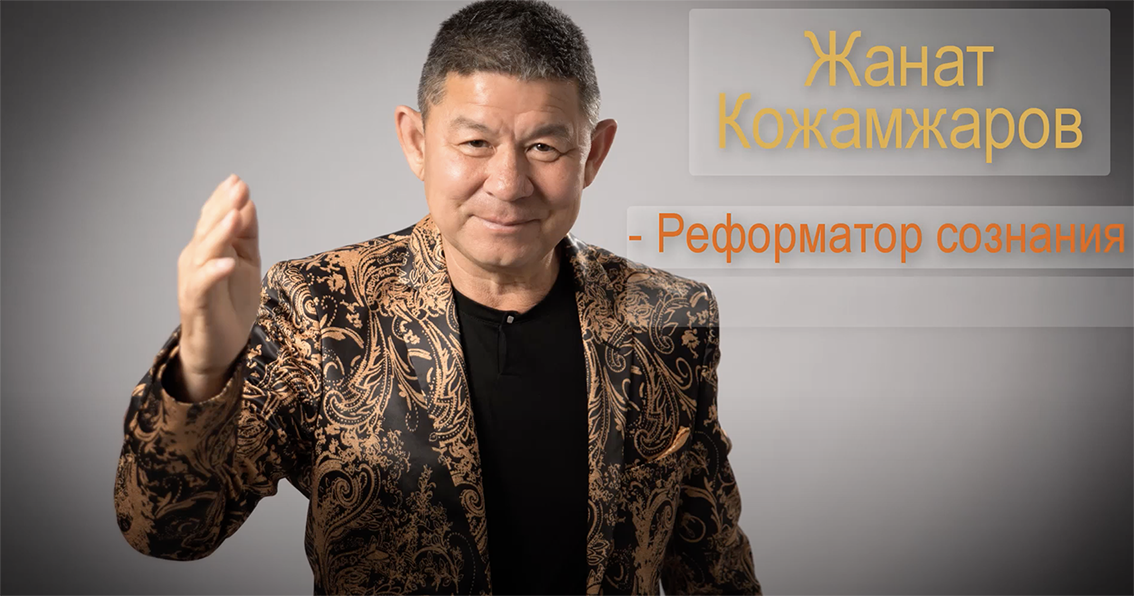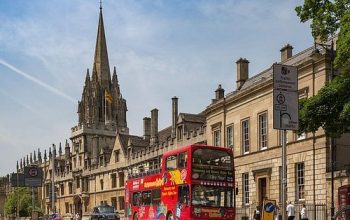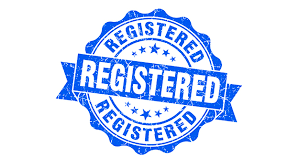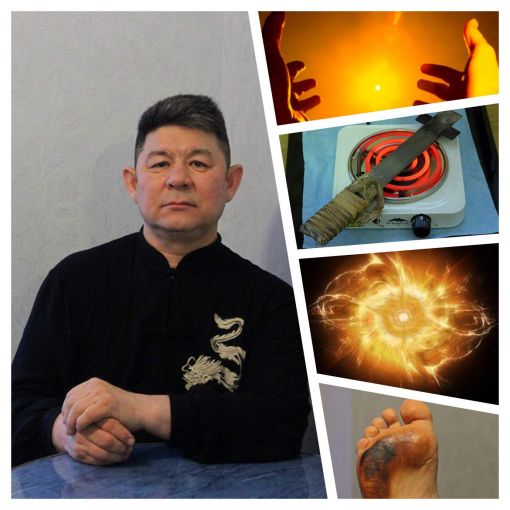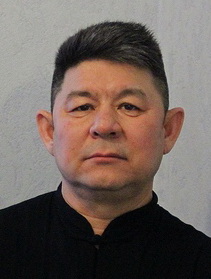
Prof. Zhanat Kozhamzharov, PhD, Grand PhD., Academician, Professor
This article is written with a true sense of deep respect for all Chinese people, their unique vitality and admiration for the ancient culture, science and art of China. China’s self-name, the “Middle State”, is explained by the fact that the Chinese have anciently believed that they are at the centre of the World, but this is not entirely true. In fact, originally in the middle to the end of the first millennium B.C., this name did not refer to any particular state entity, but to the numerous kingdoms located on the Central Plain – the “Middle Kingdoms” or “Middle Plain Kingdoms”. Thus they were distinguished from the southern kingdoms, which were located on the territory of the modern southern provinces, mainly Guangzhou and Fujian. Already then the name “Middle State” began to correlate with a concrete state, which became known all over the world as China.
Origins of the Russian name “China” are still not clear enough, although it is believed that it comes from the name of the people “Kidani” or “Kitai” (in Chinese – Qidan), which united the tribes of the Mongolian group – tribes of eastern Hu, which lived in ancient times in the area of Mongolia and Manchuria. The Qidan created their powerful state Liao in 907-1125, having detached from China a number of territories, in particular provinces Hebei and Shanxi. In the 15th century, the name “China” and its derivatives were often used for Northern China and China (Hina) for Southern China. For example, the Russian traveller Afanasy Nikitin (1470s) used the name “China” for Southern China and “Kita” for Northern China. The People’s Republic of China should not be confused with the Republic of China (Zhonghua Mingguo). The Republic of China was founded in 1911 and, according to the official position of the People’s Republic of China, existed until 1949. However, the authorities of the island of Taiwan today still call themselves the Republic of China, that is, they believe that this state has not ceased to exist. According to the official version, Taiwan is a part of the PRC, namely one of its provinces. This is a very rigid position, so it is always necessary to be very careful about the name of China and the clear official position of this state in relation to Taiwan. The full official name of the country of China – the People’s Republic of China (PRC) was officially proclaimed on 1 October 1949, and this day is still a bank holiday of the PRC. In Chinese, the PRC is pronounced “Zhonghua zhenmin gonghego” and China is pronounced “Zhongguo”, which translates to “Middle State” or “Central State”.
In 1973, during the excavation of burial site No. 3 in the Mawandui district (Changsha, Hunan province), belonging to the Han dynasty (206 BC – 220 AD), the “Scheme of “leading and attracting (qi)” (daoyintu), executed in colour on silk cloth, as well as “Notes on how to do without food and feed on qi” were discovered. Based on these archaeological finds, we developed the “Mawandu system of “leading and attracting qi”. In the further development of this system, other ancient and modern techniques of “leading and attracting qi” were also used.
The impact of this qigong system is based on the “opening” of active points, when “qi and blood” are mentally directed from the zuqiao point to the shenque point. The effectiveness of the exercises will be higher if they are performed between 23 and 1 o’clock or between 11 and 13 o’clock. If the exercises are properly organised, in about two weeks a “shenque stream of consciousness” of different intensity can be formed, which, spreading throughout the body, ensures uninterrupted circulation of qi and blood in the whole organism, balances the forces of yin and yang, promotes the “unity of heaven, earth and man”, brings him into a state of mental balance, creates a wonderful mood, causes a “feeling of super calm”, regulates the work of the cerebral cortex and creates conditions for its full rest. As a result, the “vital information” accumulated by the “original spirit” is fully activated. This complex consists of a preparatory and six main stages.
Preparatory phase
Before the session you should empty your bowels and bladder as much as possible, avoid overexcitement, refrain from smoking and drinking strong tea and coffee. It is necessary to get rid of extraneous thoughts, relax and concentrate. After that you can proceed to further preparation, remembering that “thought leads qi, qi follows thought, form contributes to the realisation of hidden possibilities. It is possible to start “removing turbid and gaining pure qi” only when a certain degree of perfection in “leading and attracting qi” has been achieved. “Removing turbid and gaining pure qi” is carried out as follows. “True qi” is led from the baihui point to the yunquan point, and then from the yunquan point to the “centre of the Earth”, resulting in the removal of “turbid qi” from “true qi”. At the same time, the “pure qi”, which is also in the “true qi”, rises to the zuqiao point located between the eyes. At this time there may be a different intensity of “clarification of consciousness”, which manifests itself in a feeling of “natural rest”, “complete relaxation of the body”, “return to the original”. In other words, there is a state of detachment when “the outer and the inner merge into one.” As it is written in the treatise “Qingjing jing”: “Inside you contemplate the soul, outside you contemplate form, (a) form is formless, in the distance you contemplate objects, (a) objects are absent”.
Only then can one begin to perform the complex.
Stage 1: Heavenly garments have no seams
The order of performing the exercise
Having finished the preparatory stage, turn both hands with palms upwards and synchronously raise them along the sides of the torso up to the parietal region. First direct qi to the vertex through the point baihui, and then through the behind-the-ear area, neck, chest to the points shenque, huayin and then through the toes and heels to the “centre of the Earth”. Perform nine times.
Note
When performing the exercise, one should strive to ensure that the position of the body and movements of the hands were coordinated with the movement of qi. Imagine that after a day of work you are taking water procedures, with water of optimal temperature, “washing your soul and body”. Imagine that you are gently enveloped by “heavenly clothes without seams”, woven from “true qi” and fresh air. During the exercise, the movements do not necessarily have to reach the points that the “thought” reaches. If the “garments cover the toes of the feet”, then the hands move only up to eye level and then return to the starting position. If “clothes cover the heels”, then the hands reach only the neck, and the “thought” leads qi from the ears through the chest, points huayin, yuntsuan to the “centre of the Earth”.
Step 2: Break yin, bring back yang
The order of the exercise
Execution of the second stage begins immediately after the previous one. Perform the exercises of the preparatory stage. Slowly raise the palm of the right hand (“yang palm”) along the surface of the torso on the right side in such a way that the fingertips are directed to the stars, moon, electric lamp, fresh flowers or any other beautiful object. Evoke a sensation of warmth in the palm of the left hand (“palm yin”). Raise the left hand forward in an arc to the junction of the pubic bone so that the point of laogong is strictly opposite the point of huayin. Continue raising the arm through the shenque point to the zuqiao point. Take a short pause and lead qi, starting from the zuqiao point, through the shenqiuhe point to the huayin point (this is “refraction of yin, return of yang”). Similarly, the exercise is performed on the right side of the torso. Perform it nine times.
Note
This exercise is taken from the scheme 6 “Refraction of yin” “Schemes of leading and attracting qi”, found during excavations in the area of Changsha. During the exercise, “soul and body” should continue to relax, concentration should increase. Only when these conditions are fulfilled can we make qi move between the points of zuqiao, shenque and huayin, achieve balance between yin and yang.
Step 3: Heavenly Circle of the Great Limit
Execution order
Execution of the third stage begins immediately after the previous stage. Perform the exercises of the preparatory stage. Hands, in accordance with the movement of thought, from left to right outline a line dividing the Sign of the Great Limit in half. In this case, the point shenque is considered as the central point, and the points baihui and yuntsuan – as poles. Men perform the exercise with the left hand, women – with the right. Mentally connect your body and the Sign of the Great Limit into a single whole. Execute nine times.
Note
While performing the exercise one should make sure that “movements of hands and thoughts” outline the Sign of the Great Limit in a coordinated way. The exercise regulates the work of the whole organism, relieves mental tension.
Stage 4: Penetrate into the Middle Palace
Exercise execution order
Execution of the fourth stage begins immediately after the previous one. Perform the exercises of the preparatory stage. Bring both hands to the chest. Massage the chest along the midline, the area under the armpits. Perform nine times.
Note
During the exercise, the movements are performed only from top to bottom. “Thought” is led from the “heavenly bodies” (above), to the “centre of the Earth” (below). This exercise promotes not only the “unity of heaven, earth and man”, but also the formation of a stable gait, when “the top is emptied, the bottom is filled”. The exercise prevents the development of cerebral vascular diseases, hypertension and coronary insufficiency.
Step 5: Grace sprinkles on the vertex
The order of performing the exercise
Execution of the fifth stage begins immediately after the previous one. Perform the exercises of the preparatory stage. Bring one hand (men – left, women – right) to the head in such a way that the palm is turned to the point baihui; bring the other hand to the point yuizhen and fix the palm opposite to it. Perform circular movements. Men first perform the movement clockwise, and then – anti-clockwise. Women perform the exercise in the reverse order. Perform it nine times.
Note
The general requirement is that the point of the laogun is projected onto the corresponding point on the body. There should be a feeling that “the points are touching and not touching, that the palm is pressed and not pressed”. It is necessary to strive that the rotary movement of hands and “movement of thought” should be carried out in coordination. Carefully make sure not to touch the hair and even more so the scalp. After finishing the circular movements, again achieve the feeling that “the points touch and do not touch”, that “the palm is pressed and not pressed”.
With the help of this exercise you can quickly normalise the work of the nervous system, activate the accumulated “vital information” and manifest the hidden possibilities of the human body.
Stage 6: The primordial spirit returns to the bosom
The order of fulfilment of the exercise
Execution of the sixth stage begins immediately after the previous one. Perform the exercises of the preparatory stage. Exercise is performed lying on the side, relaxed. Bring the left hand to the shenque point and lightly press the area of the Laogong point. Bring the right hand to the ear so that the earlobe is between the thumb and forefinger (“support the earlobe with the hukou area”). Then perform the following actions: “observe qiao” (transfer your gaze from the point tzuqiao to the point shenque), “count the breath” (count to yourself from one to nine four times), “listen to the breath” (listen to the sound of your breath with your whole body), “feel super peace” (imagine yourself in a boat with “the book of the river Luo” in your hands crossing through the misty haze over the dragon’s back of the Huanghe River to Fenglai xiange and back).
Note
This is a high-level exercise that results in “the original spirit returning to the bosom”. The performance of this step should be based on a solid skill base. This exercise, in addition to complete concentration, absolute precision of action, and “merging man with the sky,” requires a secluded environment and fresh air. Only by fulfilling these requirements can one deeply immerse oneself in the “feeling of super peace”. The “stream of shenque consciousness” will be inexhaustible. The activated “original spirit” will calm down and “return to the bosom”. The exercise not only does not cause “deviations”, but also can open up special abilities in a person.
List of sources used
1) Maslov A.A. China without lies – M.: RIPOL Classic, 2015. – 288 p.- (Zagranitsa without lies).
2) Lukoyanov V.V.. Cognise yourself. Energy of beauty, health and longevity. – SPb, 1993. – 66 с.
3) Tong Yuanze Mawandui complex qigong – M.: “Qigong and Sport”, 1992, №4. – 64 с.
4) Tsang Daulai Chan-Mi Gong Training of vital energy – qi in the Buddhist tradition – SPb, publishing house “Finance and Statistics”, 1992. – 32 с.
5) Tsang Daulai Chinese qigong-therapy – M.: Energoatomizdat, 1991. -67 с.
6) Dubrovin D.A. Difficult questions of Chinese medicine – L.: Asta-press 1991. – 112 с.
7) Jackson Adam Ten Secrets of Health / Transl. from English – M.: Publishing House “Sofia”, 2006. – 144 с.
8) Voronov I.A. The Secret of the 72 Warrior Arts of the Russian “Apocalypse” – St. Petersburg: Aton, 1998. – 384 с.
9) Nasonova L.V. I want to share, or family secrets of healing, Book 1 – M.: Golden Library of Health, magazine “Fizkultura i Sport”, Almanac (issue 11), 1995. – 224 с.
10) Voronov I.A., Kulikova Z.V., Kurgan Y.N. Ancient Chinese psychomotor gymnastics DAO-IN and its military variant: Methodical manual. – SPb.: LNPS CSM, 1996. – 279 с.
11) Abaev N.V., Gorbunov I.V. Sun Lutan about philosophical and psychological bases of “internal” schools of wu-shu. – Novosibirsk: Nauka, 1992. – 224 с.
